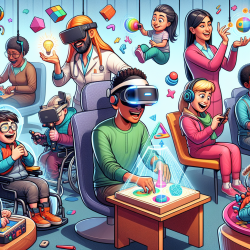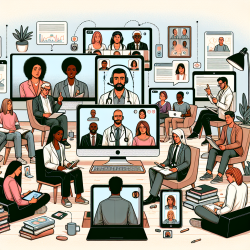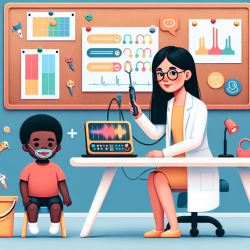Implementing Research Outcomes to Enhance Online Therapy for Visual Impairment

In the ever-evolving landscape of online therapy, practitioners must continually refine their skills to offer the best possible care. One way to achieve this is by staying informed about the latest research and implementing its findings. A recent study titled "Identifying causes of vision loss and assistive technology needs among patients attending rehabilitation clinic of a tertiary care center in North India" provides valuable insights that can significantly enhance the effectiveness of online therapy for individuals with visual impairments.
Understanding the Study
The study aimed to identify various causes of vision loss and determine the assistive technology (AT) required for vision rehabilitation (VR). Conducted at a tertiary eye care center in North India, the research reviewed electronic records of patients who attended the VR clinic over two years. The findings revealed that the most frequent eye problems were retinal disorders (63.5%), followed by retinitis pigmentosa (15.2%) and rod-cone dystrophy (4.7%). Approximately 36.0% of patients had severe blindness (<1/60 vision).
Key Findings and Their Implications
The study's outcomes underscore the importance of early detection and timely management to prevent irreversible vision loss. For online therapy practitioners, this means integrating early screening tools and educational resources into their practice. Here are some actionable steps based on the study's findings:
- Early Detection: Incorporate screening tools and questionnaires to identify potential vision issues early. This can help in referring patients for timely medical intervention.
- Assistive Technology: Recommend and train patients on the use of AT. For instance, patients with better than 1/60 vision can benefit from optical devices like magnifiers, while those with less than 1/60 vision may require tactile and auditory AT such as braille books and screen readers.
- Patient Education: Educate patients and their families about the importance of early intervention and the availability of VR services. This can help in reducing the socioeconomic impact of visual impairment.
- Gender Sensitivity: Address the gender gap in accessing VR services by creating targeted educational programs and ensuring equitable access to therapy resources.
Encouraging Further Research
The study highlights the need for ongoing research to understand the barriers to accessing VR services, especially among women. Practitioners can contribute to this by documenting their observations and experiences, thereby adding to the body of knowledge in this field.
Conclusion
By implementing the findings from this study, online therapy practitioners can significantly enhance the quality of care for patients with visual impairments. Early detection, appropriate use of assistive technology, patient education, and addressing gender disparities are crucial steps in this direction.To read the original research paper, please follow this link:
Identifying causes of vision loss and assistive technology needs among patients attending rehabilitation clinic of a tertiary care center in North India.
Citation: Senjam, S. S., Beniwal, A., Lomi, N., Aggarwal, S., Vashist, P., & Tandon, R. (2024). Identifying causes of vision loss and assistive technology needs among patients attending rehabilitation clinic of a tertiary care center in North India. Indian Journal of Ophthalmology, 72(5), 520-525. https://www.ncbi.nlm.nih.gov/pmc/articles/PMC11149511/?report=classic










